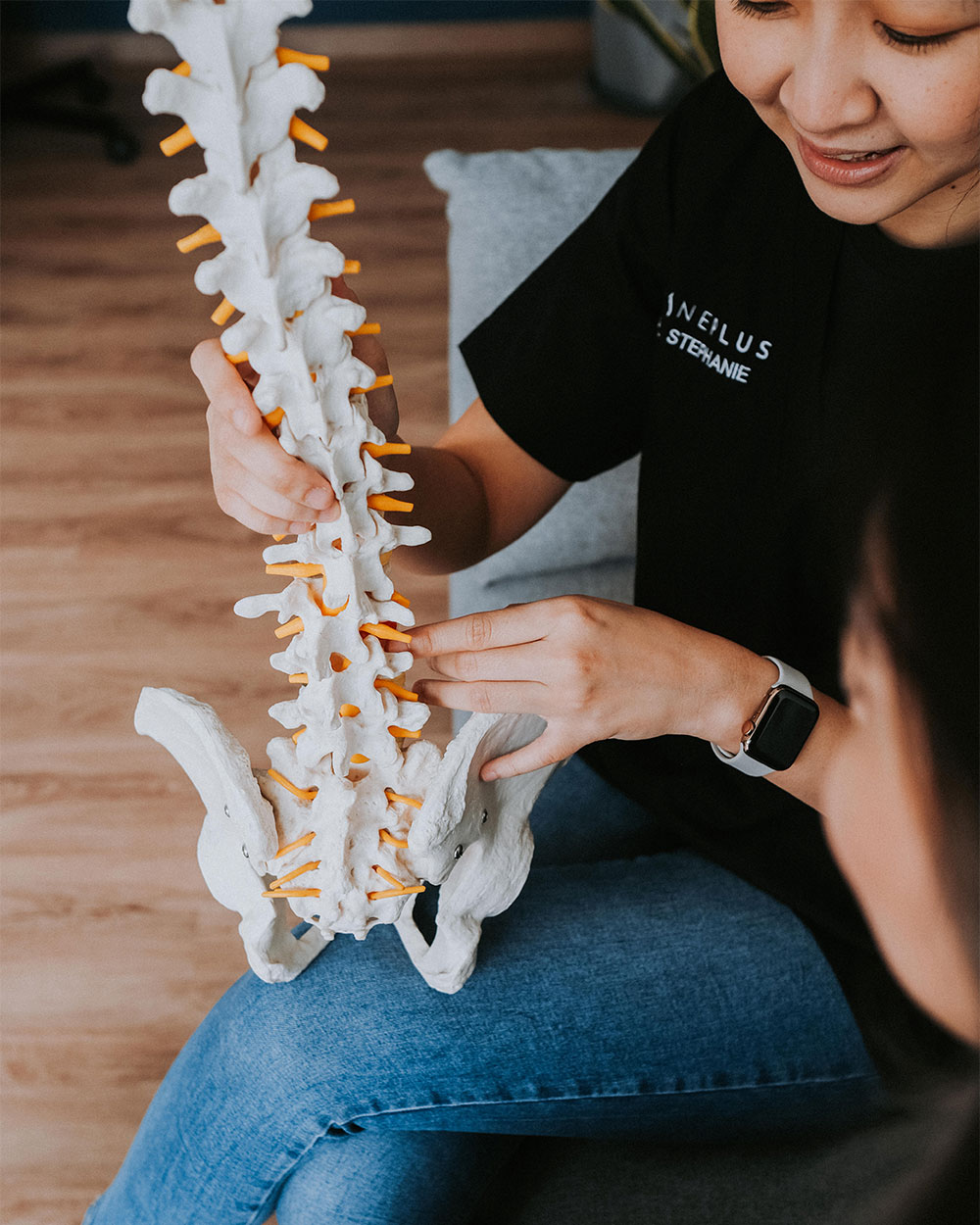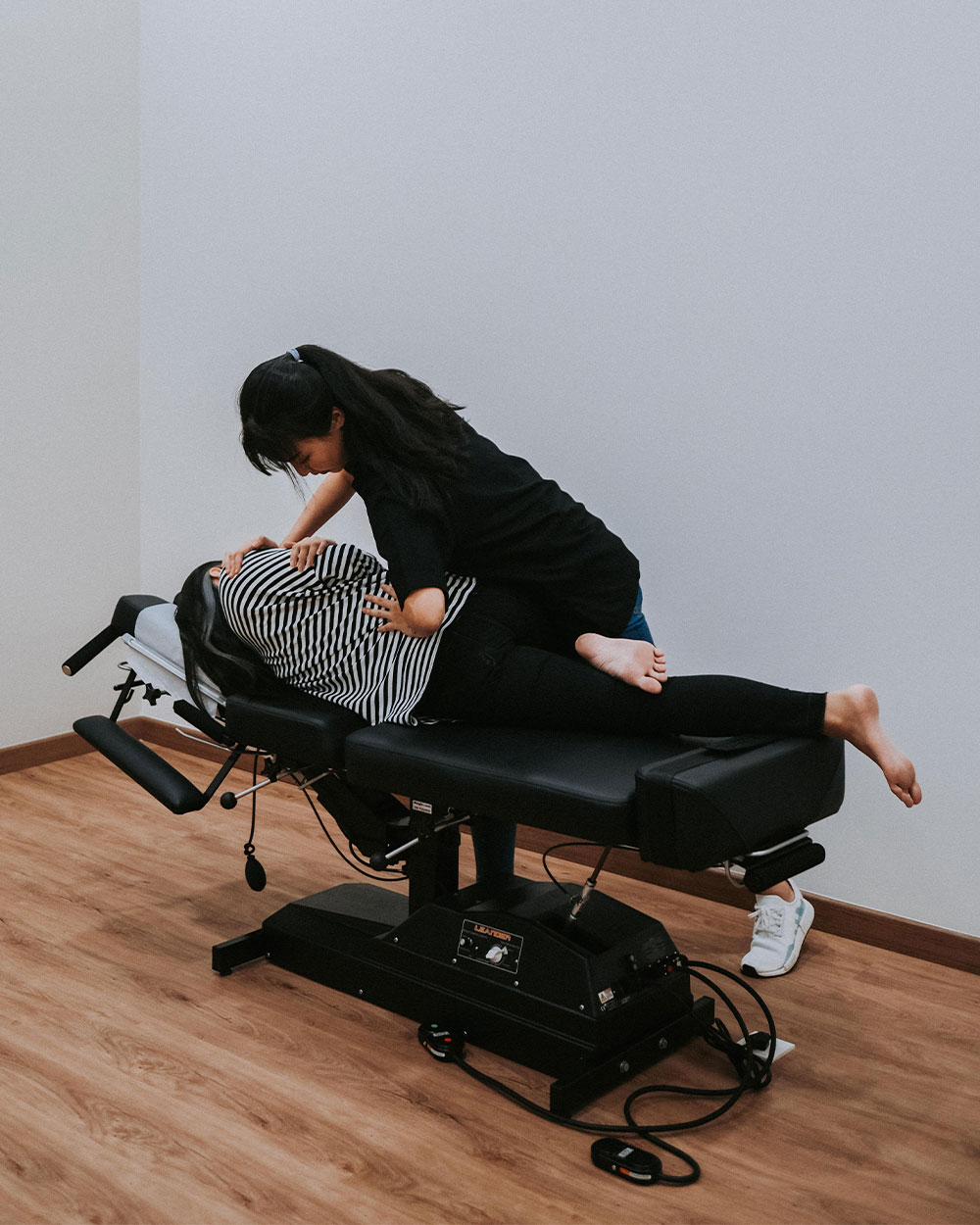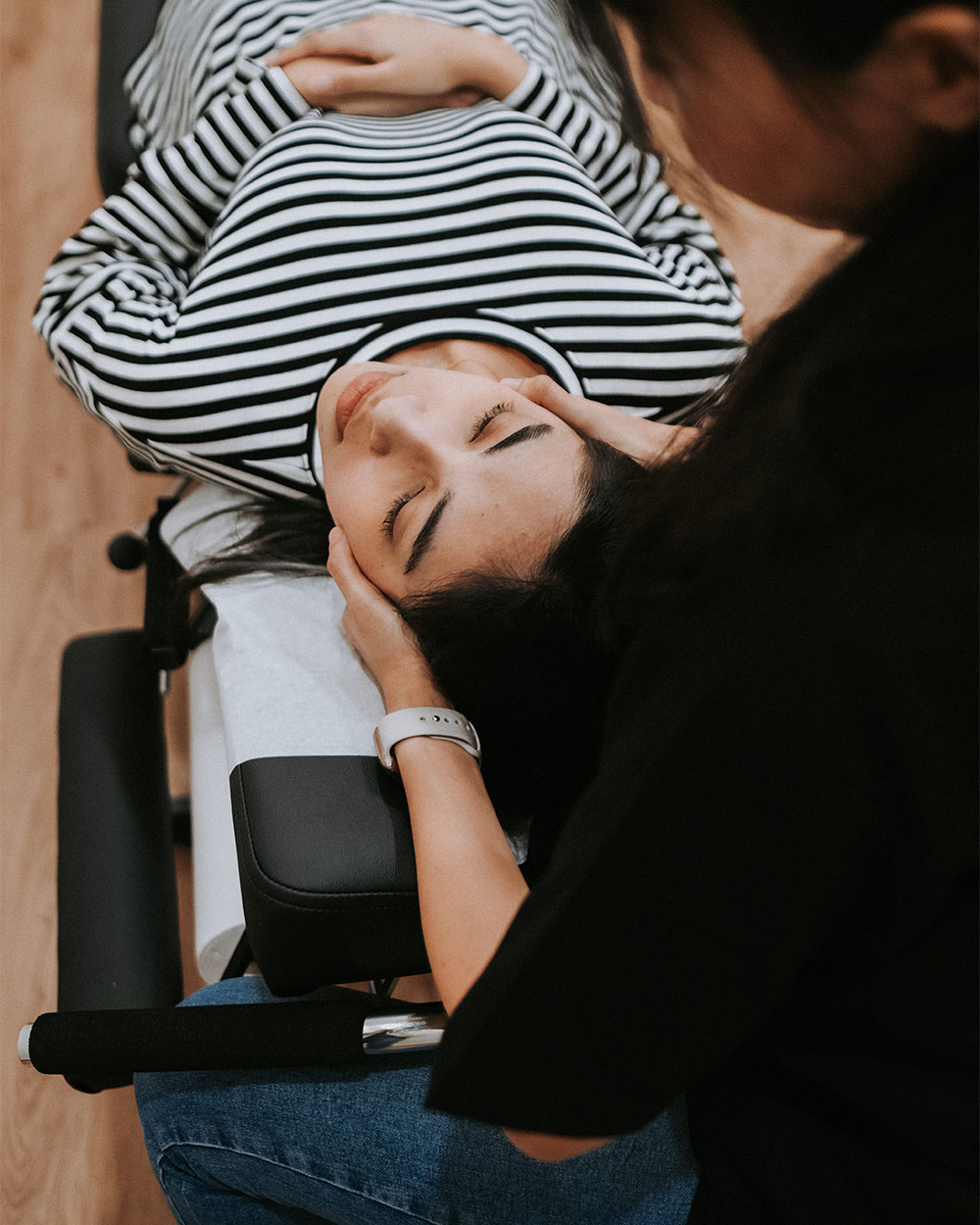World Spine Day: A chiropractor shares everything to know about getting treatment
Let’s get cracking

Admit it—whether you’re 25 or 50, it’s not uncommon to be complaining about backaches to your peers these days. The reality is that our current lifestyles are taking a toll on our bodies, be it from long working hours in front of a computer, poor posture, or a combination of both and other bad habits. Not to mention, spinal disorders are becoming more prevalent, with scoliosis alone accounting for two to three per cent of Malaysia’s population.
If this sounds relatable, you should consider seeing a chiropractor to help improve these symptoms. In conjunction with World Spine Day on 16 October, we spoke to Stephanie Choo Cui Fen, a licensed chiropractor and founder of Spineplus, to learn how chiropractic can relieve the burden of spinal pain and disorders.
As a scoliosis patient herself, Stephanie started seeking chiropractic treatment at the age of 19, which inspired her to pursue the practice to help others as well. Ahead, she shares everything to know about the role of a chiropractor and getting treatment in Malaysia.

Describe what you do as a chiropractor.
I see patients mainly dealing with musculoskeletal conditions, meaning the muscles, tendons, ligaments, nerves, and the spine. For first-timers, the treatment will usually start with a consultation. Patients will then come in for subsequent visits because chiropractic treatments are not a one-off thing—we have to do a lot of awareness events and content to educate the public about this. I don’t blame them because chiropractic is still relatively new in the medical field, so we need to help people understand that most of the time, it’s not just a one-time visit.
What is the goal of a chiropractor?
I think every chiropractor would be very happy to just see their patients improve, recover, and get out of pain. Not just that, but also achieving wellness in general because chiropractic is a holistic kind of care—it involves a manual kind of therapy and it’s not invasive.
How did the chiropractic practice grow in Malaysia?
Before, you had to study overseas to become certified, but we now have a chiropractor course at International Medical University (IMU). This was the first and only course to be available in Southeast Asia less than a decade ago. It was very new when I started but since then, the course has produced chiropractors every year.
I would say the demand [for chiropractors] is also increasing because our lifestyles have changed—the demand to be in front of our laptops has increased so much in the past ten years. The good thing is people are also more aware that they need to take care of their spine because we are now seeing early stages of degeneration among working adults when it should only be happening in their 50s or 60s.

What type of health care does chiropractic fall under?
We fall under traditional and complementary medicine under the government body, so that is quite self-explanatory—we complement medicine. For example, patients who do not want to get surgery may sometimes seek a chiropractor for a second opinion.
We also provide primary healthcare, so in my case, I have come across a patient whom I suspected had a stroke because of his medical history and suggested for him to see a doctor. True enough, he had a case of mild stroke. This is why consultation is important—a lot of people want to skip this part and just start “cracking” but it’s not that direct. Sometimes during examinations, we can see symptoms that do not present themselves in a way that’s just a postural issue. During the consultation, we screen for these red flags and if there’s something not within our scope, we will refer our patients immediately to get the right treatment.
What’s the difference between a chiropractor and physiotherapist?
I would say physiotherapists deal a lot more with muscles. They also deal with ligaments and tendons as well, but they focus more on deep tissue release, rehabilitation, and strengthening. Chiropractors, on the other hand, are trained to adjust your spine and joints. Typically, both chiropractors and physiotherapists work together to help patients feel better. When it comes to seeking treatment, I would say it’s best to get a consultation first and then we will refer our patients to see a physiotherapist if necessary. Most of the time, treatments are best when coupled together.

What are the most common misconceptions about your job?
I think one of the common misunderstandings is being confused with traditional chinese medicine (TCM) because of its background in Malaysia. I can’t speak about other professions, but I always educate my patients that chiropractors will always adjust your spine and specific problem areas. If you have a specific segment or joint that’s stuck, we don’t want to adjust the whole spine because that’s not our goal. We just want to correct the misalignment and address the main root of the problem—that is how I would say we differ from any other kind of bone setting or adjustment treatments.
Another common myth is that chiropractic treatment is quite painful. For first-timers, I understand the cracking sound can be scary. People think it’s because of bones rubbing against each other but it’s actually just gas bubbles being released from the joints. Of course, if you’re releasing a very tight muscle, it can be painful.But the adjustment itself is not painful 99 per cent of the time unless it’s an acute problem, like if you just fell and have an inflammation. The cracking sound may scare people a little bit, but a lot of the time after treatment, people find that it’s not as bad as they thought.
Another one is people like to self-crack their own backs and that’s very bad because it will cause instability in the long run. For example, your C5 may be stuck, but your C3 and C4 are the ones making a sound when you crack your back. You will feel relieved but in an hour or two, you will feel the need to crack your back again because your C5 is still stuck!
Who are the main target groups that should see a chiropractor?
Honestly, everyone. I can’t just say working adults because pregnant ladies and the elderly also need treatment, and even some kids too. The adjustment for kids is very different from adults because their joints are still developing, but it’s better to address any potential issues like scoliosis from a young age. If you were to pinpoint a group, I would say working adults need it most because we sit more and move less. Every group has different issues though, so it’s really for everyone.
How often should patients come in for chiropractic treatment?
For patients who have pain or specific concerns, the frequency of visits can range from once to twice a week in the initial phase, as that’s when we want to speed up the recovery. If you’re talking about general wellness or what we call “maintenance”, then I would say once a month. But that’s provided that they’re very diligent with stretching and they know how to take care of themselves without coming to the centre. For example, if you do not have any back pains, but you sit for long hours in the office, you can come in regularly for a wellness treatment.

What are the dos and don’ts before and after chiropractic treatment?
If you have a very inflamed joint, then we would suggest putting an ice pack. At Spineplus, we would also prescribe exercises after treatment. Sometimes we provide ergonomic advice for our patients’ home or office setup to help them in the long run. There are also case-by-case issues where we may ask our patients to stop certain exercises or habits for the time being until their symptoms improve.
Are there any side effects from getting chiropractic treatment?
Only soreness if it’s your very first time but otherwise, no. In fact, I have patients who tell me they sleep better on the day of their adjustment. A handful of my patients who had digestion issues realised that they have less bloating and indigestion after coming for consistent treatment. We don’t directly treat these issues because that’s not our goal, but as we interfere with the whole spinal cord and nervous system, of course, that would affect your whole health. You may even eat better, sleep better, and feel less lethargic.
Is there anything else you would like the public to know about chiropractors?
There are some people out there who try to market themselves as a chiropractor, which can be very misleading. The easiest and safest way to differentiate a licenced chiropractor is to look them up on the official chiropractic website (Association of Chiropractic, Malaysia) because all our names are registered there. I think consumers really need to make informed decisions about what they’re signing up for so awareness is very important.
For more information about Spineplus or to make an appointment, visit the website. Learn more about chiropractic in Malaysia here.

Spineplus
Address: Sunway Geo Avenue 2 (E-01-06), Sunway City, Subang Jaya
Contact: 03 56119960 | +6011 6270 2806
Email: [email protected]
Website | Facebook | Instagram
Find more health-related stories here.
| SHARE THE STORY | |
| Explore More |



